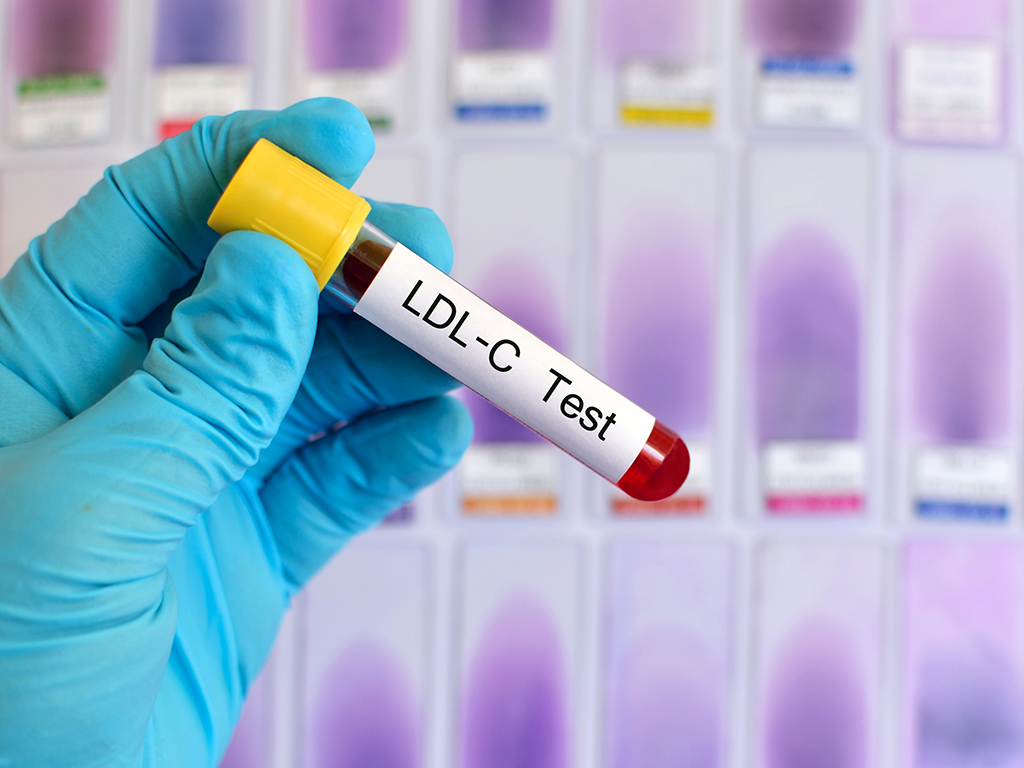The CDC warns that keeping levels of low-density lipoprotein (LDL) cholesterol in your bloodstream under control is an important step in maintaining heart health, especially in lowering your risk of heart attack or stroke. Unfortunately, having high amounts of LDL cholesterol—which is the “bad” cholesterol versus the “good” high-density lipoprotein (HDL) cholesterol—usually comes with no symptoms and must be monitored through regular blood tests. But the agency warns that physical warnings of high cholesterol show up on the body in some cases. According to the CDC, “Occasionally, some people develop yellowish growths on their skin called xanthomas, which are cholesterol-rich deposits. People with xanthomas may have high cholesterol levels.” And for more factors that put your heart at risk, see why If This Wakes You Up at Night, Your Heart May Be in Danger, Experts Warn. According to Mount Sinai Hospital, xanthomas are bumps on the skin that can range in size from less than a centimeter to more than three inches in diameter. The lesions can appear anywhere on the body but are usually spotted on the elbows, joints, tendons, knees, hands, feet, or buttocks. If they’re on the eye, they’re called xanthelasma A 2018 study also found that while xanthomas are usually asymptomatic, they can also be itchy or painful in some cases. And because they’re often a warning sign of an underlying health issue, it’s recommended to contact your doctor if you spot them so they can properly diagnose your condition. And for more skin symptoms to be aware of, If You Notice This on Your Skin, You Could Be at Risk for 13 Cancers. The CDC warns that while many indicators of high cholesterol don’t crop up until a major medical emergency like a heart attack or stroke, staying on top of your levels can be hugely helpful. The agency recommends checking them with a blood test at least once every five years.ae0fcc31ae342fd3a1346ebb1f342fcb The CDC also suggests avoiding foods high in saturated fats to help keep your cholesterol in check, which often includes anything made from animals such as butter, cheese, or red meat. Instead, try to increase your intake of high-fiber foods like oatmeal and beans. They also suggest healthy unsaturated fats that are found in foods like avocados, olive oil, and nuts. And for more on foods that come with major perks, Eating This One Thing Can Cut Your Cancer Risk in Half, New Study Says. When it comes to potential dermatological warning signs, it’s not just xanthomas that could mean your heart’s in danger. According to a study published March 5 in the Chinese Medical Journal, psoriasis is an independent risk factor for cardiovascular diseases and is associated with an increased risk of major adverse cardiovascular events, like heart attacks. According to Healthline, the skin condition results from an immune system overreaction that causes systemic inflammation in the body. Unfortunately, it’s this inflammation that puts people at risk. “Chronic inflammation has long been associated with an increased risk of heart attack and stroke,” Kevin R. Campbell, MD, an internist and cardiologist with Cano Health, told Everyday Health. And for more risk factors regarding your heart, If You Have This Blood Type, Your Stroke Risk May Be Higher, Study Says.



